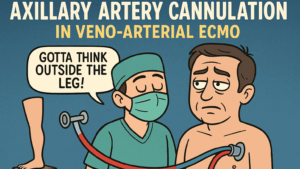In cardiac surgery, myocardial protection during arrest remains essential to prevent ischemic damage and preserve heart function. Traditionally, high-potassium depolarizing cardioplegia has been used for over five decades. However, this method can lead to adverse effects like calcium overload, energy depletion, and mitochondrial injury. A promising alternative is polarizing cardioplegia, which maintains the membrane potential closer to its resting state and minimizes cellular stress during ischemia.
This experimental study, conducted by Laurenz Wolner and colleagues, assesses the performance of a novel polarizing cardioplegic solution—St Thomas’ Hospital polarizing blood cardioplegia (STH-pol)—in a preclinical rat model of chronic ischemic heart disease. The researchers aimed to determine whether STH-pol offers superior or at least comparable myocardial protection relative to the standard depolarizing solution, St Thomas’ Hospital No. 2 cardioplegia (STH-control).
Experimental Design and Methods
Using a well-established ischemia/reperfusion model, myocardial infarction was induced in male Sprague Dawley rats by permanent ligation of the left anterior descending (LAD) artery. After six weeks—allowing the development of chronic heart damage and reduced ejection fraction—rats were assigned to receive either STH-pol or STH-control during 60 minutes of cold cardioplegic arrest, followed by 45 minutes of warm reperfusion. Both hemodynamic recovery and biochemical markers of energy metabolism were measured.
The polarizing solution (STH-pol) included esmolol (1 mmol/L), adenosine (0.5 mmol/L), and magnesium (10 mmol/L), targeting a more physiological arrest mechanism by avoiding high potassium. The standard STH-control solution, by contrast, contained 16 mmol/L potassium to induce depolarized arrest.
Hemodynamic Results
Both groups showed similar recovery in left ventricular systolic pressure (LVSP), cardiac output, stroke volume, and coronary flow. STH-pol displayed slightly better early recovery trends—particularly in LVSP and coronary flow—but these differences were not statistically significant. The two groups also showed similar performance in pump-function curves at various afterloads, indicating comparable contractile recovery.
Metabolic and Biochemical Findings
High-energy phosphate (HEP) measurements including ATP, ADP, AMP, and phosphocreatine (PCr) revealed no significant differences between STH-pol and STH-control. However, both cardioplegic groups showed significantly reduced HEP levels compared to sham-operated rats without myocardial infarction or ischemia. This indicates substantial energy depletion during the ischemic insult, regardless of cardioplegic method.
One notable biochemical result was the significantly greater reduction in myocardial oxygen consumption (MVO₂) post-ischemia in the STH-pol group compared to the STH-control group (22% vs. 6% reduction; p=0.04). This may reflect reduced energy demand during arrest with STH-pol and could signal improved myocardial efficiency or less stress.
Arrhythmia and Pacing Events
Fewer arrhythmias were observed in the STH-pol group, a trend likely due to the antiarrhythmic effects of esmolol and the avoidance of potassium overload. Nonetheless, more animals in the STH-pol group required pacing, suggesting a potential trade-off in chronotropic suppression.
Clinical Relevance and Interpretation
Although STH-pol did not outperform STH-control in statistically significant ways, its comparable results in the setting of chronically impaired hearts are encouraging. The polarizing method may offer benefits such as reduced oxygen demand and better coronary perfusion—attributes especially valuable in ischemic cardiomyopathy.
This study is particularly relevant to clinical scenarios involving coronary artery bypass grafting (CABG) or valve surgery in patients with reduced ejection fraction. The fact that STH-pol showed no inferiority—and even some positive trends—warrants further investigation, especially in large animal models and eventual human trials.
Study Limitations
The ex vivo working heart model, while widely used, lacks the systemic complexity of in vivo models, limiting translational certainty. The study also used only male rats, leaving potential sex-specific effects unexplored. Moreover, the advanced ischemic damage present in the model may have obscured subtle protective effects of STH-pol.
Conclusion
This study represents the first exploration of STH-pol cardioplegia in a clinically relevant model of chronic ischemic heart disease. The findings show that STH-pol performs comparably to standard depolarizing cardioplegia, with trends indicating potentially favorable effects on myocardial oxygen consumption and arrhythmia reduction. These results support continued research into polarizing strategies for myocardial protection in high-risk cardiac surgery patients.







